FDA and EU regulations are a complex web, and thus daunting. This is one area where a mistake might cost you very dearly in terms of product recall and a severely tainted reputation of your brand. I am going to provide you with a clear checklist to sail through these rules, making your products safe, compliant and ready to hit the market.
Injection Molding To guarantee your parts are food grade, make sure you use certified food grade raw materials, that manufacturing environment is clean and controlled, and you have documented the process. This incorporates the usage of food grade lubricants and handling methods. In order to be FDA and EU compliant, you must confirm that not only the resin material but also any colorant is specifically approved as used in contact with food under laws such as those of the FDA CFR 21 and (EU) No. 10/2011. Traceability depends absolutely on proper documentation.
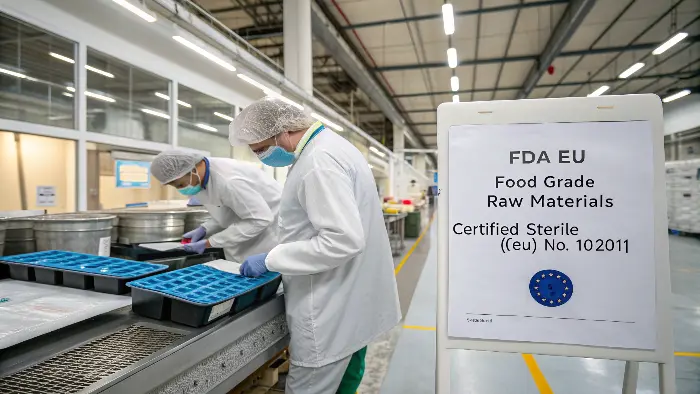
This is simply of paramount importance to get right These are regulations that I have seen both the large and small companies mess with, and in all cases it is very costly and a stressful mistake to correct afterwards. However, I can assure you that with the proper knowledge and strong strategy, it is fully doable. You do not have to be a regulatory lawyer to do well. What do you need to know to make food-grade molding a part of your business?
Is injection molding itself actually food-safe?
You have an excellent idea of a food container but is the injection molding process itself secure? That is a legitimate worry Dust or even lubricants and contaminants of machinery can seep in your final product. This may prove to be a health hazard and a nightmare insofar as compliance is concerned. How can the injection molding process itself be made that systems do not whisper to your co-workers that they are, in fact, food-safe from start to finish?
**Yes, injection molding food safe will be a food safe process as long as certain controls are established. The trick is keeping a highly controlled environment or clean room to block contamination. You should make use of food-grade lubricants on the mold and machinery as well as cleaning agents. In addition, all of the steps along the production line, which include handling of the materials all the way through packaging, have to adhere to rigorously laid hygiene procedures to certify that the final part is safe to come in contact with food. The creation of the process is as safe, as the environment that you provide.
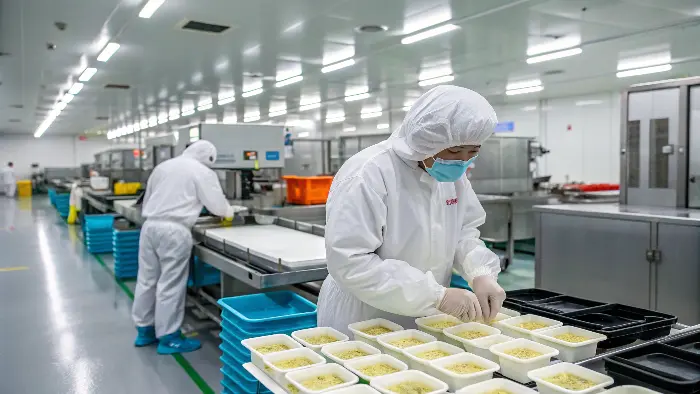
It takes more than a chosen plastic to determine food-contact product safety. Just as critical as the road that the plastic travels in its conversion into a raw pellet is the route that it makes in its transformation to a finished part. I recall an early project in my career that was yogurt cups. The customer chose an ideal, FDA approved polypropylene. However, they were failed a quality check during manufacturing run of the first batch. The error did not lie with the material; it was a conventional non-food-grade model release agent applied by the user. It was an easy mistake which cost them a week of working. This was an important lesson that I learned since the whole manufacturing sector needs to be food safety oriented.
The Role of the Manufacturing Environment
The foundation is Gmp. This is not a mere recommendation and but is a system of principles to ensure that goods are produced and managed as per quality regulations. In the case of food-grade molding, this implies a clean, well illuminated and pest-controlled plant. The quality of air is also controlled with an aim of reducing air contaminants. Many manufacturers that are in the top tier use certified cleanrooms (such as the ISO Class 8) to mold, assemble and package food-contact objects to ensure the utmost degree of cleanliness.
Machine and Mold Considerations
The equipment itself makes a great contribution Although a machine constructed in 100 per cent stainless steel is not always necessary, it requires consideration of that portion that can possibly come in contact with the plastic. The most sensitive are the lubricants, the greases, and the cleaning solutions. All of them are to be food-grade certified (typically having an H1 rating with NSF). This applies to hydraulic fluid present in the machine in case of any possibility of leaking, grease in the ejector pins and the spray to clean the mold surface.
Process Control and Traceability
This is where you connect the dots. You need to be able to trace every single part back to its origins. This means documenting everything.
| Area of Control | Key Action | Why It’s Important |
|---|---|---|
| Raw Materials | Log material batch numbers upon arrival. | Ensures you can trace any issue back to a specific material lom the supplier. |
| Production | Record production dates, machine used, and operator. | Pinpoints exactly when and how a specific batch of products was made. |
| Mold & Machine | Document all maintenance, including lubricants used. | Proves that only food-grade substances were used on the equipment. |
| Packaging | Use clean, approved bags and boxes. Store in a clean area. | Prevents contamination of the finished product before it even leaves your facility. |
This level of documentation feels like a lot of work, but it’s your best defense if a problem ever arises. It allows you to isolate a specific batch instead of recalling an entire product line.
What are FDA food-grade Materials?
Choosing a plastic for your food packaging can feel like crossing a minefield. There are simply too many to select from, and the technical data sheets are full of technical terms. You could get it wrong and invite compliance failure or, worse, chemical leaching that can poison consumers. I’m going to familiarize you with the most common and tested FDA-approved materials so you can make the right choice with confidence and ensure your product’s safety right from the start.
FDA food-grade resins are polymers cleared by the U.S. Food and Drug Administration as safe for direct food contact. They are regulated in the Code of Federal Regulations (CFR), Title 21. Polypropylene (PP), Polyethylene (HDPE, LDPE), Polycarbonate (PC), and PET are some common examples. It is not just the base resin; the additives or the colorants used must be FDA-approved for the food contact application intended too.
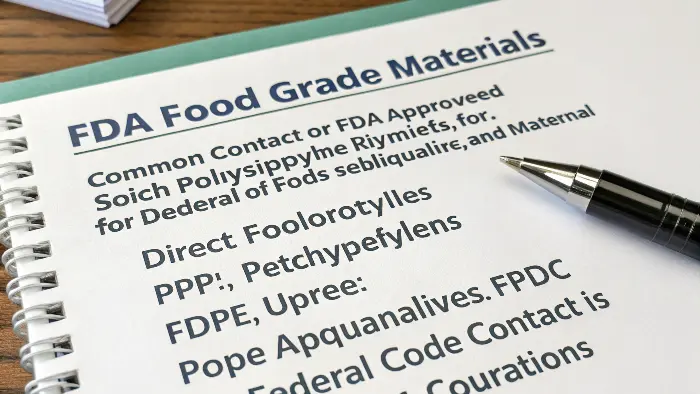
An FDA food-grade material is the raw material- the plastic pellets that the factory receives. The FDA has no approval of final products Rather than approving them, it approves the substances to make them. This is approved according to the list of substances identified in the Code of Federal Regulations, Title 21. Your material company should be in a position to offer you a certificate that the material of a particular grade that you are purchasing conforms to these regulations. Do not ever assume that the type of material used is not compliant, always request the documentation with regard to the specific grade and color.
Common Food-Grade Polymers
You’ll see a few materials used over and over again in food packaging and products. Each has its own strengths, which is why we see them in different applications.
| Material | Common Uses | Key Properties |
|---|---|---|
| Polypropylene (PP) | Yogurt cups, reusable containers, bottle caps | High heat resistance, good chemical resistance, tough. |
| HDPE | Milk jugs, cutting boards, detergent bottles | Stiff, strong, excellent chemical resistance. |
| LDPE | Squeeze bottles, plastic films, six-pack rings | Flexible, soft, good moisture barrier. |
| PET / PETG | Water and soda bottles, food jars | Excellent clarity, good gas barrier, tough. |
| Polycarbonate (PC) | Reusable water bottles, baby bottles (less common now) | Very high impact strength, transparent, heat resistant. |
Beyond the Base Resin: Additives and Colorants
This is an extremely important point that many do not notice. A polymeric component is almost never 100 percent pure. It virtually never includes any additives such as UV stabilizers, processing aids, or, most often, colorants. Individually all of the ingredients used in that end-product plastic must be FDA compliant as regards a food contact. You cannot have an FDA compliant natural PP and add a non-compliant red colorant and use it to make a compliant part. The whole compound, including the color concentrate must be certified by your supplier. This is the reason you have to deal with reliable suppliers who are familiar with the food-grade industry and can deliver the required certification concerning their colored products.
How Food Safety Supported by Plastic Injection Molding?
Plastic injection molding would be a perfect solution to produce durable, conroe holland accurate and hygienic parts of food production. This is how it aids in food safety:
1. Why Dresscode?
Due to the hygiene and compliance reasons the selection of materials to be used is considered to be significant.
Injection molding utilizes food-grade resins, including polyethylene, polypropylene and PET. Such materials are chosen due to their non-toxic nature, their resistance to chemicals, and the ability to withstand pressure and heat. The resins are comprehensively tested in relation to achieving compliance standards and to ensure food safety in application.
2. Durability with high volumes
In high-volume productions durability is a major issue.
Components used in the food business have to be durable enough to work under intense workloads and stress. The injection-molded parts are extremely resistant to wear and tear and can perform under a wide variety of conditions, including over long periods in potentially hostile environments such as heat, moisture, cleaning fluids, etc.
3. Scalability Cost-Effective End-Production
Plastic injection molding is very scalable, which makes it easy to produce large quantities of the compliant plastic components with the same level of quality even in large quantities. This is advantageous especially in addressing the needs of large- scale food manufacturing.
4. Accuracy Manufactufacture of Hygienic Parts
Plastic injection molding results in parts with close tolerances and a smooth surface, limiting the possibility of contamination. It also has features like smooth edges and accurate fits to reduce cells or food-particles that trap, promoting hygiene in a production facility.
What is the difference between FDA compliant and food grade?
Suppliers and designers using words and phrases such as FDA compliant, food grade and food safe probably interchange them because they often refer to the same issues. This can easily result into miscommunication. You may think you receive one thing but you are actually receiving another and it may cause the extremely great jeopardy to your entire project. It is time to clarify this misunderstanding forever and discover what each term means so that you can communicate in the language of compliance.
**"Food grade" normally signifies that the material itself is acceptable and harmless to come into direct contact with food." FDA compliant" goes further and implies that the material is in line with the stringent code of the Food and Drug Administration in the United States under CFR Title 21. Our company has received queries as to whether we can produce a "food-grade" material that did not comply with" FDA requirements". Obviously, the answer is no. However, noncompliance with FDA rules does not preclude a material being described as being food grade." Food safe" is the end of product that has been assured that it is safe to use according to specified intended use. A material which has been molded in a fashion which does not meet FDA requirements may not be food-safe.
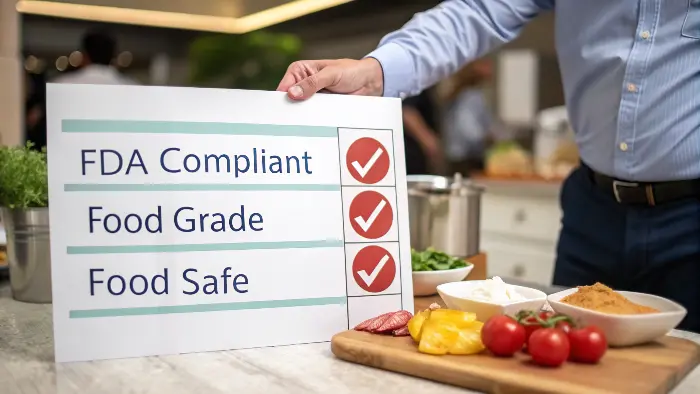
You can think of terms like these as blocks. They all depend on each other so as to produce an entirely safe product that the consumer is using. I talked to clients who state, I want a food-grade part, where I ask them what does that mean to them and where are you selling it. Explaining this at the outset a contemporary nightmare. Here we will dissect it, so you can discuss it with authority.
Understanding "Food Grade"
This is the most general term. It means that the material is made of substances that are considered non-toxic and won’t create a health hazard if they come into contact with food. It’s a broad declaration of suitability. However, it doesn’t carry any specific legal weight on its own. It simply means the material is designed for the job.
Decoding "FDA Compliant"
This is a precise, legal, and regulatory definition. This implies that the raw material supplier guarantees that the polymer, and any additives that are incorporated into it, are on the approved chemicals list of the U.S. Code of Federal Regulations Title 21. This is an official statement that the material is in line with the U.S. market requirements. If you request a supplier of an "approved FDA compliant" material, you should be provided with an official certificate stating the exact regulation that it is in compliance with.
The Final Goal: "Food Safe"
It is the most important term of the four because it is the final product that your customer will eat. A product is only "food safe" if a material that is FDA-compliant is formed in a food-safe process environment. You may have the world’s best compliant material, but if the dirty machine that you process it on has non-compliant grease on it, the final part is not food safe. "Food safe" is what you will have from having both the material and the process at your disposal.
| Term | Meaning | What it Applies To |
|---|---|---|
| Food Grade | A general term meaning the material is suitable for food contact. | The raw material’s intended use. |
| FDA Compliant | A legal term meaning the material meets specific U.S. regulations (CFR 21). | The raw material’s regulatory status in the USA. |
| Food Safe | The final state of a product, confirming it’s safe for consumer use. | The finished part, after manufacturing. |
How do EU food contact regulations differ from the FDA’s?
You’ve got FDA regulations for your product at last and it’s a success in the US. Now you’re looking to take over the EU. Great market, but don’t consider your product ready to go. The EU has its own complicated set of regulations and to consider them the same as the FDA’s is a recipe for disaster, resulting in halted shipments and missed sales. I’m going to lay out the key differences so you can plan for day one global compliance.
**EU food contact regulations, mainly (EU) No. 10/2011, are stricter than FDA regulations. The EU is founded on a "positive list" of approved substances (monomers, additives) permitted to be used. One of the biggest differences is in the testing for migration. Companies are required to test the final product so that materials will not transfer from plastic to food in quantities above defined levels (SMLs). FDA policy is generally in the formulation of the raw material itself.
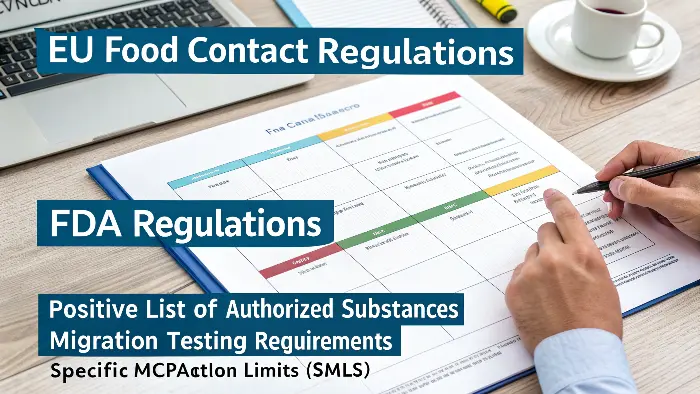
Navigating international regulations is a big part of growing a business. The key is to know the differences before you start designing and manufacturing. While both the FDA and EU aim to protect consumers, they go about it in very different ways. Understanding this is essential for any company looking to sell food-related products on both sides of the Atlantic.
The EU’s "Positive List" Approach
The core of the EU’s legislation for plastics is Regulation (EU) No. 10/2011. This regulation contains a "Union list," which is a positive list of all the monomers, additives, and other substances that are permitted for use in plastic food-contact materials. If a substance is not on this list, you simply cannot use it. This is a very prescriptive approach. The FDA also uses lists of approved substances, but the EU’s framework is often seen as more rigid and comprehensive in this regard.
The Importance of Migration Testing
The major difference is this. The EU asks the final plastic object to be tested so as to determine whether there is any substance which migrates out of the plastic material to the food. They established an Overall Migration Limit (OML) = 10 mg/dm 2, the sum of all the substances transferred. They also establish Specific Migration Limits (SMLs) to individual substances that are seen as more hazardous. This test is carried out by use of food simulants (use of acetic acid to act as potential food acids or use of ethanol to act as potential fatty foods) under particular time and temperature conditions mirroring the intended use of the product. This implies that you must test the finished product not just depend on the raw material certificate.
Declaration of Compliance (DoC)
In Europe, a formal document named as Declaration of Compliance (DoC) has to be supplied with the food-contact materials at every phase of the supply chain (excluding retail outlets). This is a document issued by the manufacturer, in which the product is said to be in compliance with regulations. It also should state what tests it has passed and what kind of food it is safe to be used with and under what conditions (e.g., "safe up to 70 o C, no more than 2 hours").
| Aspect | FDA Approach (USA) | EU Approach |
|---|---|---|
| Core Principle | Based on lists of approved substances in the Code of Federal Regulations. | Based on a "positive list" of authorized substances. |
| Key Regulation | CFR Title 21 | (EU) No. 10/2011 |
| Testing | Focus is on the composition of the raw material. Migration testing is less common. | Mandatory migration testing (OML and SMLs) on the final article is required. |
| Documentation | Supplier provides a letter or certificate of compliance for the raw material. | A formal Declaration of Compliance (DoC) must accompany the product through the supply chain. |
Advantages of Selecting CKMold to do Food-Grade Plastic Molding
When you entrust your food-grade plastic molding with CKMold, you can rest assured because you have partnered with a business committed to the safety, compliance and quality standards. With decades of safety plastic manufacturing experience, we ensure we provide an exceptional product and service experience that surpasses performance in the food industry. We realize that the supply of products should be secure to the consumer and liability to keeping the foods wholesome.
CKMold is the trusted provider of consistent, compliant and food-safe plastic applications. Reach out to our team to discover how we can help you with your project and efficient and competent plastic molding that meet all the requirements in place.
Conclusion
Food-grade rules lie no longer have to be frightening. It only takes three simple steps: select the appropriate certified metal, make your manufacturing process highly disciplined, and document the process. Knowing key differences between FDA and EU rules and trying to make the final part actually food-safe you are most likely to protect the customer and your brand. Follow these steps and you will be directing molding like a boss.
